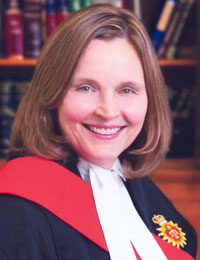Class of 1976
Many of us became "firsts": first female litigation partner in a certain major law firm, first CEO, first all-women law firm founder, first this, first that, whether we relished the idea or not. Each time it happened, though, success was made more possible for the next woman who followed. Somehow, in between going to classes and to parties and writing exams and drinking draft beer at the Embassy Tavern and forging friendships at the law school that would last a lifetime, we were turned into trailblazers. Divorce and family property law reform, the removal of abortion from the Criminal Code and the advent of the Charter of Rights are in no small way linked to the entry of large numbers of women into the legal profession and the faith placed in the legal system by millions of women in Canada to secure justice for themselves and for others. Upon reflection, I feel very lucky and proud to have been, and to still be, in a very small way part of this revolution.In September 1973, of the 150 or so members of the first-year class at the University of Toronto Faculty of Law, over 20% were women. I was one of those women. Although most of us were only peaceful and placid reformers, our mere presence at the law school in such numbers was revolutionary. During the three years that followed, some shake-ups occurred at the law school and in the legal world outside it. While we, through the Law Students' Action Committee and Women's Caucus, agitated successfully to abolish the stag party (with entertainment provided by strippers in barristers' robes) traditionally thrown each year by the law school's graduating class, and pushed for several other improvements at the law school, the cases of Irene Murdoch and Dr. Henry Morgentaler were gaining widespread attention. Little changes, big changes. In our small, self-interested way we actually were becoming part of something much larger than even we knew.


